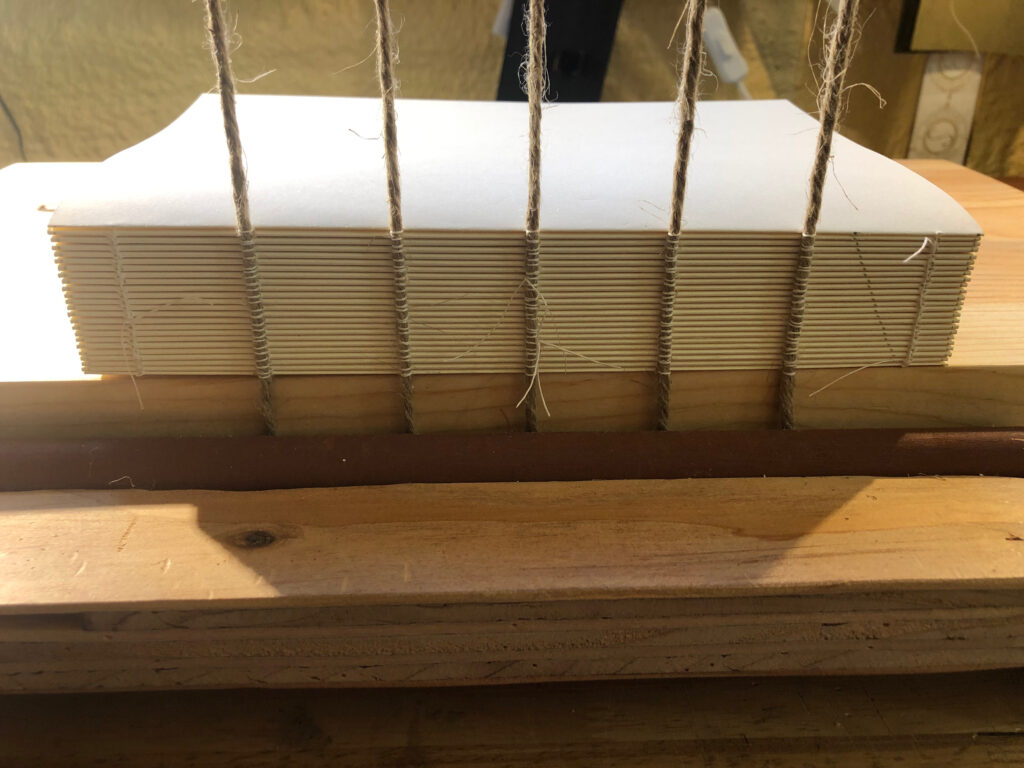
Save the date!
Pre-Order your free-range broilers today.
Order accepted until April 15th 2023
When crafting my books, I rely on hand tools and manual work. While certain steps would be much easier and faster, commercial machinery does take away from the craft itself.
Each book I make, though it might be one out several in that line, is unique. Hand-made items are never exactly the same; each has its own character build into it.
It also makes my work truly enjoyable and not just a series of repetitive tasks.

Early bands (originally called thongs) were made of leather or skin. During the 16th century, leather thongs were replaced with hemp or linen cords, proving to be much more durable. Both are still in use today.
Though introduced into northern Europe earlier, sewing on raised bands became popular in England sometime between the 12th and 13th centuries. Initially, raised band sewing was done using double bands, but single bands began to replace them by the mid-16th century.
The leather is glued directly onto the spine, leaving it flexible to support opening the book while also providing stability for the binding.
Girdle Books were small portable books worn by medieval European monks, clergymen, and aristocratic between the 13th and 16th centuries. They consisted of a book whose leather binding continued loose below the cover of the book in a long tapered tail with a large knot at the end which could be tucked into one’s girdle or belt. The knot was usually strips of leather woven together for durability. The book hung upside down and backward so that when swung upwards it was ready for reading. The books were normally religious, a cleric’s daily office, or tradesmen and merchants. They were a status symbol and signaled wealth (books were very expensive), and education (the majority of the population was still illiterate).


An English invention, patented in 1799 by two bookbinders, John and Joseph Williamson. The structure soon took off in popularity and enjoyed its heyday in the latter half of the 19th Century and the early 20th Century. The fact that the spine “springs open” and allows the book to lay almost flat for ease of writing, makes this design perfect for any kind of “stationary books” such as diaries, guest books, journals, etc.
201 St. Augustine Str, Center TX.
Behind the Chiropractor, access from Austin Street.

Pre-Order your free-range broilers today.
Order accepted until April 15th 2023
